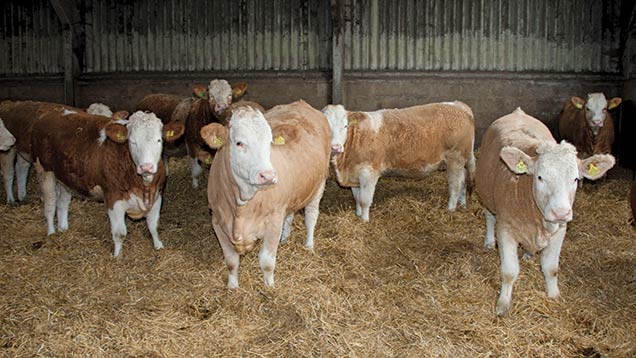Vet Watch: Fly strike warning as weather warms up
 © Tim Scrivener
© Tim Scrivener Bull and cow MoTs and flies are just some of the health issues being observed by vets at XL Vets this month. Here’s the monthly round-up.
Claire Riddell, Alnorthumbria Veterinary Group, Northumberland
Now is the time when we look ahead to the 2016 calving season and begin assessing both bulls and cows to maximise conception rates.
For bulls this involves their annual ‘MoT’ – including checking their condition, semen testing and foot trimming as appropriate.
We are also checking the reproductive tract of all heifers and measuring their pelvis to weed out any that are unsuitable for breeding due to small pelvis size that could result in calving difficulties.
Cows that have aborted, carried twins, retained cleansings or had difficult calving are all more likely to have metritis. Identifying and treating these now will help to prevent empty cows come pregnancy diagnosis.
Claire Whittle, Friars Moor Veterinary Clinic, Dorset
Flies are becoming more of a problem in our cattle. Not only are they a nuisance, they are also transmitting diseases including New Forest eye and summer mastitis.
Ear tags are now used by many farmers to control flies and last for one season. However, the most popular method remains the pyrethroid-based pour-on products.
Environmental control is also important. Dung heaps, slurry pits and calf pens act as ideal breeding grounds for flies. Good waste management, hygiene and drainage on farm will all help to reduce problems. Early control with environmental larvicides can help.
Be careful if you are castrating or disbudding and be mindful of where calves will be stocked afterwards to reduce the risk of contact with flies.
Hugo Bower, Wright and Morten, Cheshire
We’ve had a number of downer cows recently – the cows that still won’t stand, even when the initial cause has been treated. The cow’s own weight leads to muscle or nerve injury, as well as increased risks of toxic mastitis or metritis, all of which worsens the prognosis.
Treatment is intensive and time-consuming and if this cannot realistically be provided, a prompt decision is needed about emergency slaughter – within 24 hours of recumbency.
If there is no response within six hours obtain a realistic prognosis by calling your vet early. Blood samples can measure mineral levels and assess muscle damage, saving time, effort and money.
Max Wood, Larkmead Veterinary Group, Oxfordshire
Post-weaning scours continues to be a problem across many farms, even with all reasonable control measures in place. It is estimated 1% of all weaned pigs across the industry are affected. Pigs with diarrhoea replace their liquid losses by more frequent visits to the drinker.
New research from Canada has suggested a pig drinking from a bowl with side panel wastes 40% less water than one using a nipple.
This water is entirely wastage and the costs are twofold; clean water is simply being wasted and it adds to the volume of slurry, increasing those related costs.
The savings gained by a system switch would probably not outweigh the cost, but if new systems are going in and scours is a problem, bowls are certainly worth considering.
